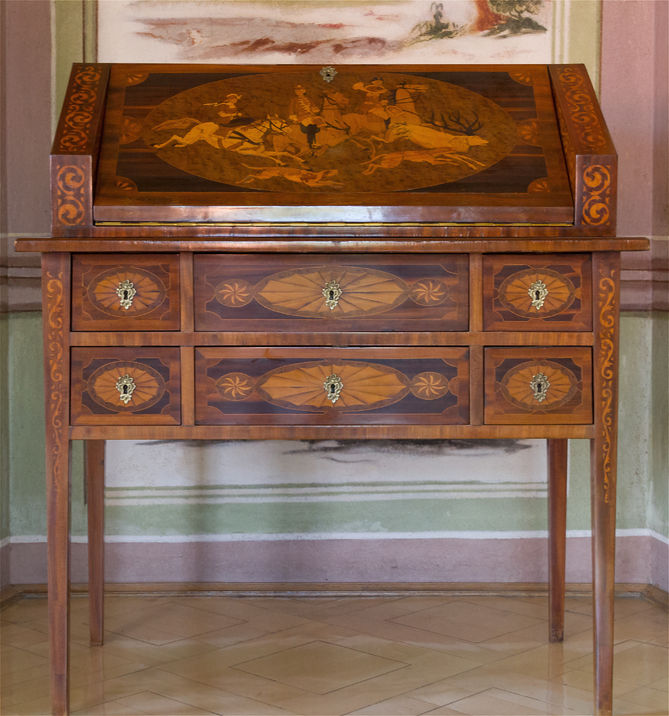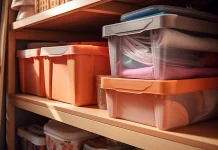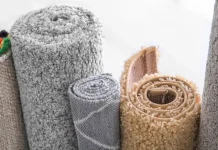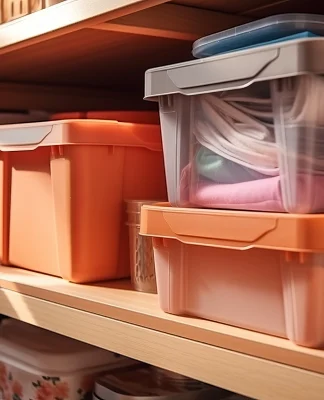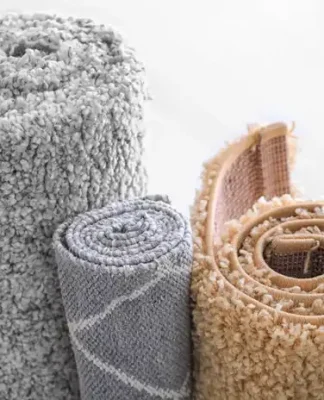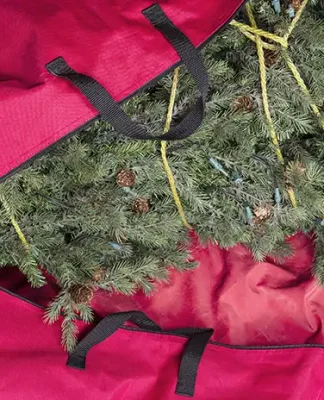Antique furniture is a great asset to many people’s lives. They can be family heirlooms, conversation starters or precious collections from special moments in your life. Whatever they may be, they’re always fragile. Weathering, deterioration and time take a toll on our furniture and we need to take that into consideration.
This is especially true when you look into storing antique furniture. You may need to store your furniture if you’re going through a move, downsizing temporarily or redesigning your home. Whatever the reason, make sure you do it right. Take a look at our tips on how to store antique furniture to ensure that you keep it in great shape.
Environment Matters
Storing your every day furniture requires a certain controlled environment. It is no different with antique furniture. In fact, it is much more important to pay attention to the environmental conditions of your storage fac ility with delicate pieces, as they tend to be affected much easier. For this reason, we recommend avoiding storage in the basement or in attics, as neither are optimally controlled environments. In order to keep your antique furniture looking like new, take the following factors into consideration.
ility with delicate pieces, as they tend to be affected much easier. For this reason, we recommend avoiding storage in the basement or in attics, as neither are optimally controlled environments. In order to keep your antique furniture looking like new, take the following factors into consideration.
Air Moisture
One of the most harmful things for your antique furniture is a high level of humidity. This is especially true if your antique furniture is made of wood. When wood furniture is exposed to high levels of moisture in the air, the pores and fibers begin to expand and burst. When the levels of moisture are too low, wood dries out and cracks. The more the levels of moisture in the air change, the more likely that the integrity of your wood will be beyond repair. If you’re storing your antiques, you can combat damage with controlling the levels of moisture in the air. Find a climate controlled unit and your humidity will remain constant.
Temperature
Having control of the temperature when you go to store your antique furniture is important. This is why it is not recommended to store in your home, as things fluctuate with the changing seasons and preferences of your family. Luckily, it’s easy to find a self-storage facility with temperature control. Find one that maintains a constant temperature somewhere between 50-80 degrees. This will help keep your antique furniture preserved for years to come.
Light Exposure
There are three different types of lights, a mixture of both natural and artificial, which can cause damage to your furniture. This happens slowly over time but once this damage is done, it is irreversible. It’s more important for antique furniture than other pieces of furniture, since they are likely to have already gone through years of bad exposure. In order to limit any more damage, finding a storage unit with lighting control is ideal. The best option is finding an indoor self-storage unit so that you can limit and control the light that reaches your things. Avoid any ultraviolet lighting conditions, as they are the most damaging to antique furniture. Additionally, try to find a unit with no florescent lighting. Whenever you can control is best. When storing antique furniture make sure that the lights in your unit remain off – save energy and your furniture at the same time. You can even go the extra mile and cover your furniture with light-blocking materials.
Security
Sometimes storage units are located in less than ideal areas and don’t take any additional security measures to protect your things. Find a self-storage unit that goes the extra mile. Look for companies that have alarm systems in place, CCTV accessibility and connectivity to the local police.
Handle With Care
 The next thing you want to remember is that you need to handle your antique furniture with care. While the storage conditions are important, making sure that items are not damaged during the move into storage is even more important. Imagine damaging your antiques, storing them and only realizing so once you start moving things out again. It would be devastating, and a costly investment for less than ideal pieces of furniture. Value of antiques decline as the damage increases, so if you’re storing for monetary value this is even more important.
The next thing you want to remember is that you need to handle your antique furniture with care. While the storage conditions are important, making sure that items are not damaged during the move into storage is even more important. Imagine damaging your antiques, storing them and only realizing so once you start moving things out again. It would be devastating, and a costly investment for less than ideal pieces of furniture. Value of antiques decline as the damage increases, so if you’re storing for monetary value this is even more important.
Clean
We first recommend cleaning all of your antique furniture. This will take off layers of built up dust and make sure that things go into storage in their best conditions.
You can start by simply wiping down all of your furniture with a clean cloth. Afterwards, make sure you use a material-specific type of cleaner for each of your items. Don’t clean wood with a glass cleaner and vice versa. Each piece of antique furniture has a unique composition and in order to keep things in good condition, you should not ignore this. After using the right cleaner, wipe down your furniture one more time to make sure that you’ve removed any harsh chemical residue.
After you wipe everything down and clean it, make sure you give your furniture an adequate amount of time to properly dry. If you skip this step, you could end up with trapped moisture, mold, discoloration and irreversible damage.
Prepare
After you clean everything, you’ll want to prepare your antique furniture for storage. The easiest way to do this is by disassembling anything that you can so that transportation is easy and you decrease your chances of damage. For anything that’s large and has drawers, make sure that they are empty. You can then remove the drawers for transportation in order to decrease the weight of your move. If you have tables, beds or sofas that have removable parts, take them off. It will make storage easier and will reduce the strain on your items over time.
Cover
Next, you’ll want to make sure that things are adequately covered for storage. Protecting your furniture with the right materials will decrease the amount of dust buildup in storage along with reducing damage from things touching. Each type of furniture usually has a material that works best with it, but as a general rule: never cover your furniture in plastic. Antique furniture needs to be able to breathe and if you restrict the airflow you could end up with more problems than you’d think.
For instance, when you store things covered in plastic, you’ll open up your furniture to mold, mildew, cracking, splitting, warping and an all around bad smell. This trapped moisture can accumulate even if you’ve made sure that everything was 100% dry prior to storage. Another problem that occurs is the finish getting stuck to your furniture. This means, when you take off the plastic, the finish will come off with it and you’ll need to refurbish everything.
You can do a little bit of research on which type of cover is best for each material, however blankets, soft cloths and furniture pads are always a great option.
Store Carefully
Just as you need to take special care in preparing your antique furniture for storage, you should take special care in actually putting things into your unit. Consider the following tips.
Organize
After you’ve taken the required measures to prepare your antique furniture, it’s time to consider your storage options. How you put your furniture into a storage unit does matter. It’s almost like a puzzle and you’ll want to remember that once it’s full, things in the back are difficult to access. In order to keep accessibility easy for items that you may need, keep them out until last so that they can be stored at the front of your unit.
Protect
Never, ever, ever stack your antique furniture. It is a risk that you  don’t want to take. While it does save a ton of space in your unit, stacking furniture can cause permanent imprints on each other. Stacking furniture is also one of the most common reasons that antiques end up breaking. They are old, and can’t hold up as much pressure as they once could. Stay safe and keep furniture in the position they were intended for. You can also leave some space between each piece of your furniture so that you can allow airflow to move throughout your unit. Doing this also gives you a layer of security in accidental damage.
don’t want to take. While it does save a ton of space in your unit, stacking furniture can cause permanent imprints on each other. Stacking furniture is also one of the most common reasons that antiques end up breaking. They are old, and can’t hold up as much pressure as they once could. Stay safe and keep furniture in the position they were intended for. You can also leave some space between each piece of your furniture so that you can allow airflow to move throughout your unit. Doing this also gives you a layer of security in accidental damage.
Consider Insurance
Finally, even if you’ve taken all of the safety measures in ensuring that your antique furniture is safe and sound, you should consider insurance. Things don’t always go as planned, and if your furniture is valuable you’ll want to protect it. Insure your antique furniture prior to storage so that your things are protected from the beginning. It is not as expensive as you might think and can protect against a myriad of disasters.
If you are considering storing antique furniture, always make sure that you find a storage unit you can trust. At The Lock Up Self Storage, we offer climate controlled and secured storage units that will perfectly compliment your storage needs. We have a multitude of different options for each personalized budget and storage needs. It’s an investment that is sure to pay off, especially when storing precious antique furniture. Visit www.thelockup.com to look through all of our available self-storage units.


